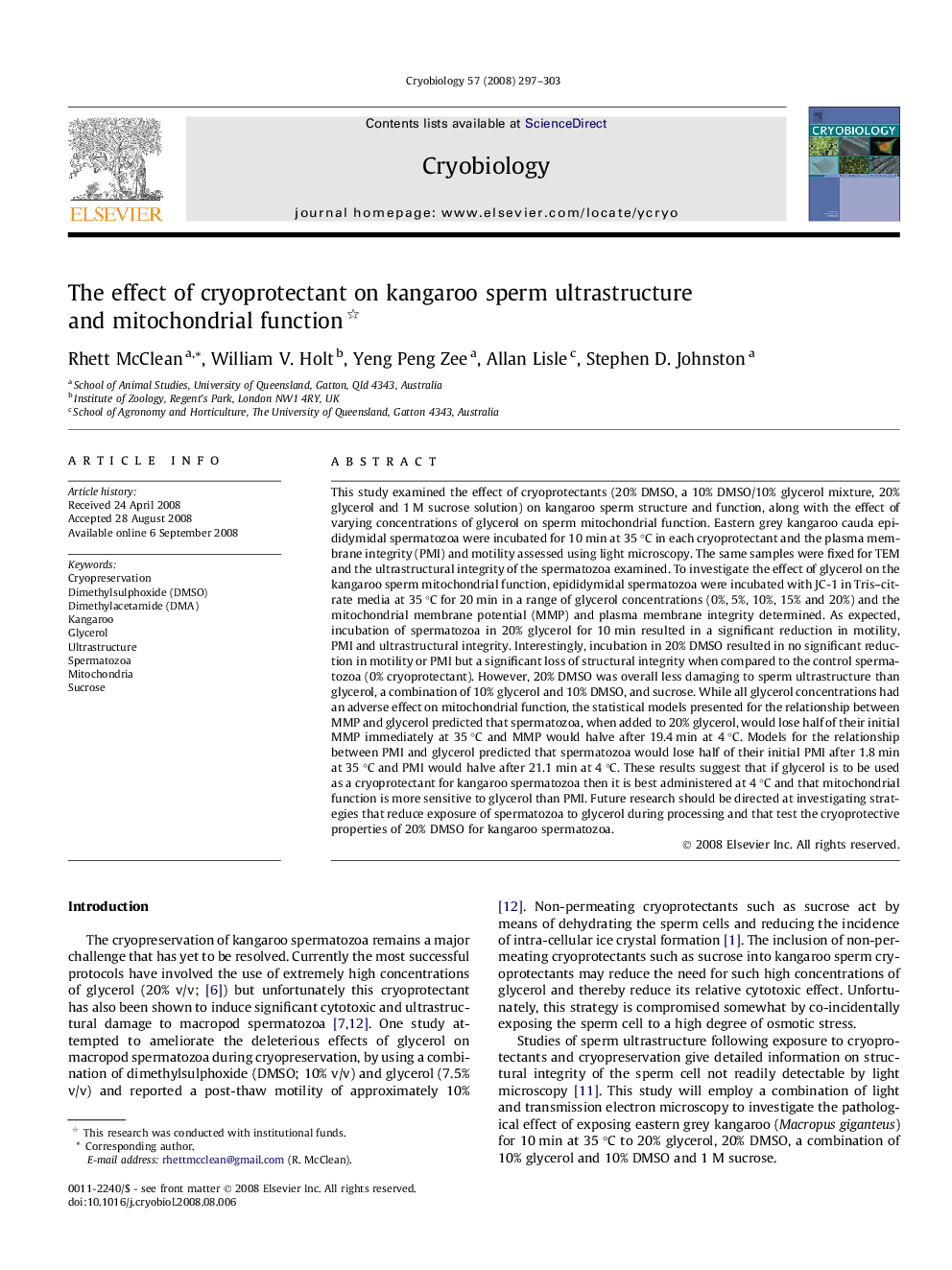| Article ID | Journal | Published Year | Pages | File Type |
|---|---|---|---|---|
| 2168905 | Cryobiology | 2008 | 7 Pages |
This study examined the effect of cryoprotectants (20% DMSO, a 10% DMSO/10% glycerol mixture, 20% glycerol and 1 M sucrose solution) on kangaroo sperm structure and function, along with the effect of varying concentrations of glycerol on sperm mitochondrial function. Eastern grey kangaroo cauda epididymidal spermatozoa were incubated for 10 min at 35 °C in each cryoprotectant and the plasma membrane integrity (PMI) and motility assessed using light microscopy. The same samples were fixed for TEM and the ultrastructural integrity of the spermatozoa examined. To investigate the effect of glycerol on the kangaroo sperm mitochondrial function, epididymidal spermatozoa were incubated with JC-1 in Tris–citrate media at 35 °C for 20 min in a range of glycerol concentrations (0%, 5%, 10%, 15% and 20%) and the mitochondrial membrane potential (MMP) and plasma membrane integrity determined. As expected, incubation of spermatozoa in 20% glycerol for 10 min resulted in a significant reduction in motility, PMI and ultrastructural integrity. Interestingly, incubation in 20% DMSO resulted in no significant reduction in motility or PMI but a significant loss of structural integrity when compared to the control spermatozoa (0% cryoprotectant). However, 20% DMSO was overall less damaging to sperm ultrastructure than glycerol, a combination of 10% glycerol and 10% DMSO, and sucrose. While all glycerol concentrations had an adverse effect on mitochondrial function, the statistical models presented for the relationship between MMP and glycerol predicted that spermatozoa, when added to 20% glycerol, would lose half of their initial MMP immediately at 35 °C and MMP would halve after 19.4 min at 4 °C. Models for the relationship between PMI and glycerol predicted that spermatozoa would lose half of their initial PMI after 1.8 min at 35 °C and PMI would halve after 21.1 min at 4 °C. These results suggest that if glycerol is to be used as a cryoprotectant for kangaroo spermatozoa then it is best administered at 4 °C and that mitochondrial function is more sensitive to glycerol than PMI. Future research should be directed at investigating strategies that reduce exposure of spermatozoa to glycerol during processing and that test the cryoprotective properties of 20% DMSO for kangaroo spermatozoa.
